A short time ago I did an article for StreetEasy about six American presidents who had streets named for them in New York City. Actually, I’ve researched all 45 presidents, and most have NYC streets named for them — or at least, there are streets that carry their names. I’ve had to stretch the concept a bit; in some cases, I’ve found store signs or schools named for presidents, and in one case, I couldn’t match the spelling exactly. In any case, it’s fairly extraordinary that I’ve been able to find each president. There is no neighborhood that carries presidents’ names exclusively, though the northeast Bronx employs NYC mayors as a street naming conceit; signers of the Declaration of Independence in Brooklyn; and classical composers and astronauts can be found in Staten Island. But not American presidents.
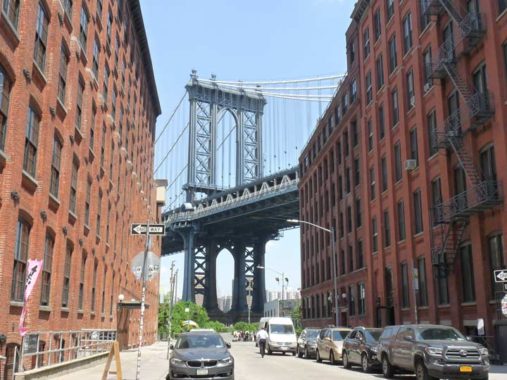
George Washington (president from 1789-1797)
Without a doubt, Washington is the most numerous street name among former presidents in NYC. As a military commander, he spearheaded the defeat of the British in the Revolutioanry War, sealing American independence, and resisted entreaties to become a monarch, instead becoming the first head of America’s Executive Branch of governmental power.
There are nine streets in Manhattan named for George Washington, from the lengthy Washington Street and Fort Washington Avenue to the dead-end Washington Terrace in Washington Heights, as well as that neighborhood and Washington Square Park. His likeness can be found all over the island in statuary, from two separate depictions on Wall and Broad Streets where he is shown taking the oath of office and kneeling in prayer at Valley Forge; to sitting triumphantly on horseback at Union Square; to conferring with is friend, the Marquis de Lafayette, at Morningside Heights.
The Bronx checks in with Washington Avenue in Morrisania; Brooklyn with Washington Street in DUMBO and Washington Avenue in Clinton Hill and Crown Heights. Another triumphant statue of Washington on horseback can be found in the plaza at South 5th and Roebling Street at the Brooklyn anchorage of the Williamsburg Bridge. Fort Greene Park used to be called Washington Park, and oddly, the section of Cumberland Street on the east side of the park is still called Washington Park.
A pair of streets in Staten Island, in Port Richmond and Willowbrook, respectively, are Washington Place and Washington Avenue. Queens doesn’t join in the honorary fun, but no doubt, before the current Queens numbering system was put in place, numerous streets were named for George Washington, including 36th Avenue in Astoria, where platform signs on the elevated Astoria Line until recently carried the “Washington Avenue” name.
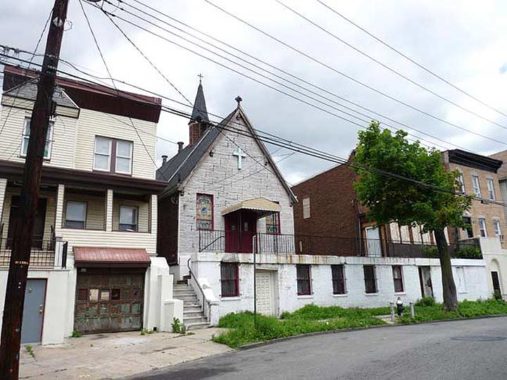
John Adams (1797-1801)
John Adams was the first president of the 19th Century, the first vice president to succeed to the presidency, the first president to reside in the White House, and the first of two father-son pairs to become president.
In the Bronx, there’s an Adams Street in Morris Park (pictured) an Adams Street in downtown Brooklyn, once shrouded by an elevated train but today a 6-lane boulevard leading to the Brooklyn Bridge, and in Staten Island, an Adams Avenue in Dongan Hills and Midland Beach.
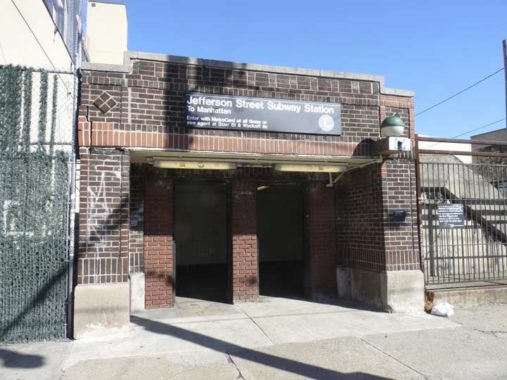
Thomas Jefferson (1801-1809)
The second Virginian to become president, Thomas Jefferson was the main composer of the Declaration of Independence, won the war versus the Barbary pirates of North Africa, and engineered the Louisiana Purchase from Napoleonic France. In Manhattan, Jefferson Street can be found on the Lower East Side; in the Bronx, a Jefferson Place in Claremont Village near Crotona Park; in Brooklyn, both Jefferson Street and Jefferson Avenue in Bushwick (with Jefferson Avenue extending from Bedford-Stuyvesant through Bushwick one block into Ridgewood, Queens). In Staten Island, Dongan Hills claims both a Jefferson Avenue and a Jefferson Street (one block from intersecting) and there’s a Jefferson Boulevard in Arden Heights.
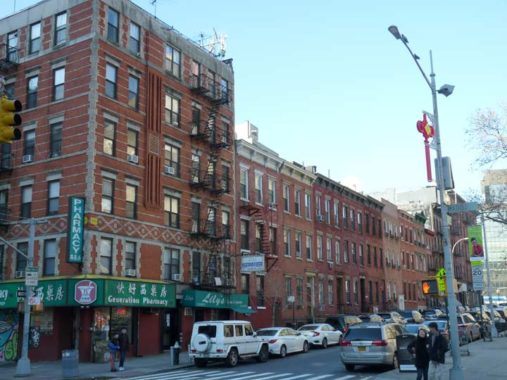
James Madison (1809-1817)
The 4th president, “Father of the Constitution,” is honored by both the lengthy Madison Avenue, slotted in between 5th and Park on the East Side, and Madison Street on the Lower East Side. Bedford Stuyvesant’s Madison Street extends northeast into Ridgewood, Queens. Staten Island’s modest Madison Avenue is a short route off the Martin Luther King Jr. Expressway in Graniteville.
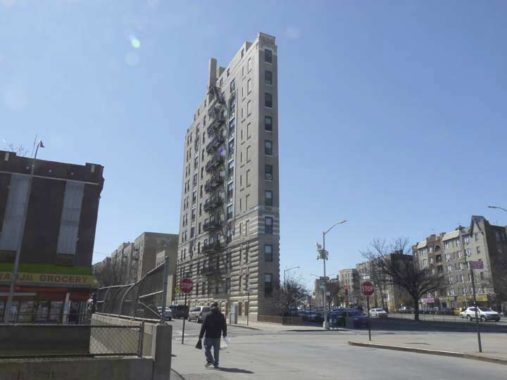
James Monroe (1817-1825)
James Monroe, the 5th president, is honored by Monroe Street on the Lower East Side, Monroe Avenue in Mount Hope, Bronx; Monroe Place in Brooklyn Heights and Monroe Street in Bedford-Stuyvesant; Monroe Avenue in Tompkinsville, and a short Monroe Place in Willowbrook, Staten Island.
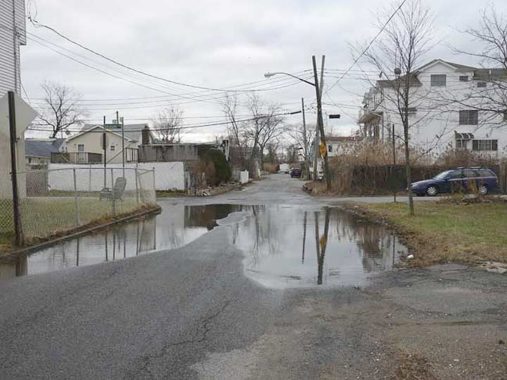
John Quincy Adams (1825-1829)
The first son of a president to become president himself, John Quincy Adams broke the Jefferson-Madison-Monroe two-term streak in his defeat to Andrew Jackson in the 1828 election. This feat would be pulled off only by one more trio of presidents, Clinton-GW Bush, and Obama; the jury is out whether Donald Trump can extend the streak to four, which has never occurred in American history. [update, 1/21: He won’t]
We’ve gone over streets named Adams, but it’s quite likely that Quincy Street in Brooklyn’s Bedford-Stuyvesant is named for JQA, while it’s less likely that Staten Island’s Quincy Avenue, in pieces in Arrochar and Midland Beach, is named for him. As to the Bronx’s Quincy Avenue in Schuylerville and Throg(g)s Neck, who can say?
According to Lepnard Benardo and Jennifer Weiss’ Brooklyn By Name, Quincy Street was named after Josiah Quincy III, a distant cousin of John Quincy Adams and the 2nd Mayor of Boston and namesake for its 200 year old public market building. At least, it’s in the family.
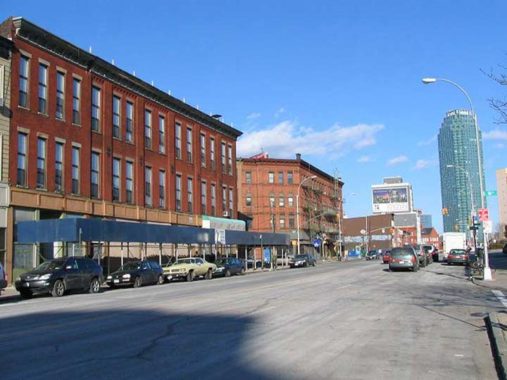
Andrew Jackson (1829-1837)
“Old Hickory” can definitely count Manhattan’s Jackson Street in the Lower East Side in his ledger. However, in the Bronx, Morrisania’s Jackson Avenue is in doubt as it was named in 1905, long after Jackson’s death. In Queens, Hunters Point’s Jackson Avenue is definitely out of the running, as it, as well as Northern Boulevard west of Flushing Meadows, were built as toll roads in the 1850s by John Jackson, and a Jackson built the mill for which Jackson Mill Road is named. In Staten Island there are two short Jackson routes, a Street in Stapleton and an Avenue in Arrochar.
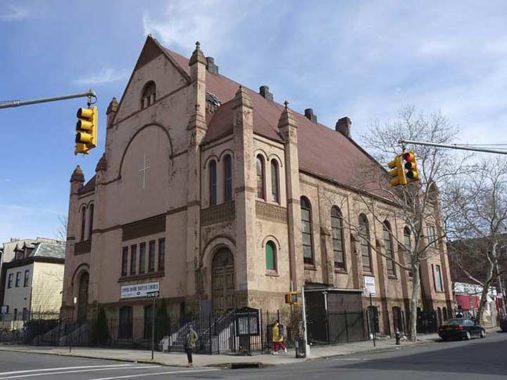
Martin Van Buren (1837-1841)
“Old Kinderhook” was an upstate New Yorker and so is well-represented on New York City Streets, though the USA suffered from an economic depression throughout his term. Brooklyn’s Van Buren Street runs several blocks in Bedford-Stuyvesant, and there’s a Van Buren Street in New Brighton, Staten Island in a neighborhood that boasts several presidential names from the 1840s and 1850s.
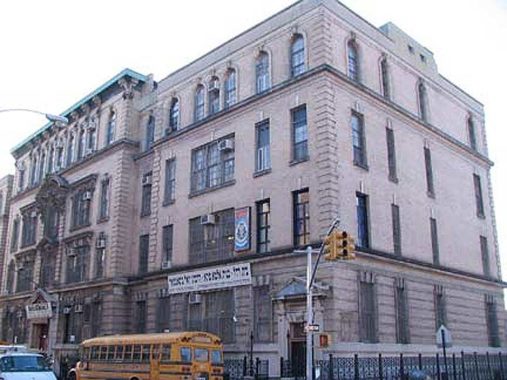
William Henry Harrison (1841); Benjamin Harrison (1889-1893)
“Old Tippecanoe” served the shortest term to date of any president, for one month from March 4 to April 4, 1841. According to legend, he took his oath of office on Inauguration Day in a driving rain, which exacerbated his cold into pneumonia, for which there was little treatment in the 1840s. He was succeeded by vice president John Tyler, the first president not to be elected to the office.
Though William Henry Harrison has no streets named for him in New York City, his father, Benjamin Harrison, was a signer of the Declaration of Independence from Virginia, and so has a street named for him in Williamsburg in a thicket of other streets named for Signers. In the Bronx, Morris Heights’ Harrison Avenue was named for a local property owner, while Williamsburg, Brooklyn’s Harrison Place and Staten Island’s Harrison Street (Stapleton) and the dead-end Harrison Place in Livingston are non-presidential.
William Henry Harrison’s grandson, Benjamin Harrison, was the 23rd president, serving between Grover Cleveland’s two nonconsecutive presidencies.
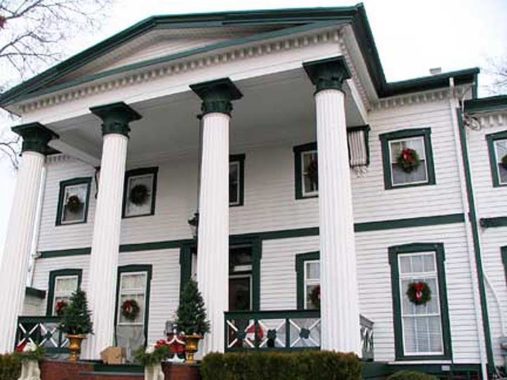
John Tyler (1841-1845)
The Gardiner Tyler Mansion, 27 Tyler Avenue between Bement Avenue and Clove Road in West Brighton, Staten Island, was constructed circa 1835, when most of the surrounding region consisted of farms and fields. President John Tyler’s widow, Julia Gardiner Tyler (1820-1889), resided in this house during the Civil War. Virginian John Tyler, the 10th president, was the first U.S. president to be married during his administration. His widow moved here after his death in 1862; even though she was born in New York, she ardently supported the Confederacy. John and Julia Tyler are buried in Richmond — Virginia, that is, not Staten Island.
In an amazing quirk, one of President Tyler’s grandsons is still around in 2019 — even though Tyler was born in 1790. Tyler had eight children with his first wife, Letitia, and seven with his second wife, Julia. One of his sons with Julia, Lyon Gardiner Tyler (1853-1935) is the father of Lyon Gardiner Tyler, Jr. (1924-2020) and Harrison Ruffin Tyler (born in 1928.) Lyon G. Tyler fathered the two sons at age 72 and 75!
In Maspeth, Queens, Tyler Avenue skirts the north end of Mount Zion Cemetery.
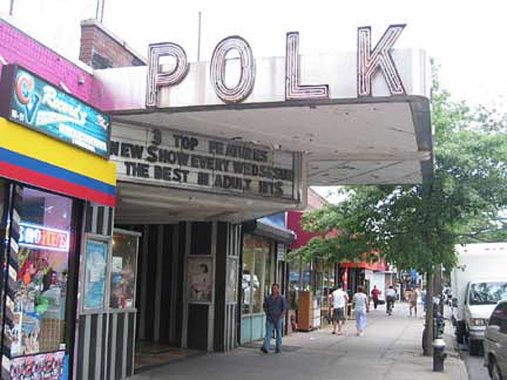
James Knox Polk (1845-1849)
James K. Polk, the 11th president, presided over American victory in the Mexican War and the initial stages of the California Gold Rush. There is no current street in NYC named for him, but there had been. When Jackson Heights, Queens, was laid out in the late 19th and early 20th centuries, north-south streets were numbered and east-west avenues were named for presidents. In 1930 the streets were renamed into the borough-wide numbering system — inclusing Polk Avenue, which became 37th Avenue. The Polk Theatre, at 37th Avenue and 93rd Street, was designed by Charles Sandblom and opened in 1938, considerably altered today. The Polk closed in February 2006, never to reopen, after several years as a porn palace. “Young Hickory” wouldn’t have approved.
There is one current NYC street named Polk — Polk Walk, in semiprivate Shore Acres in Rosebank, Staten Island.
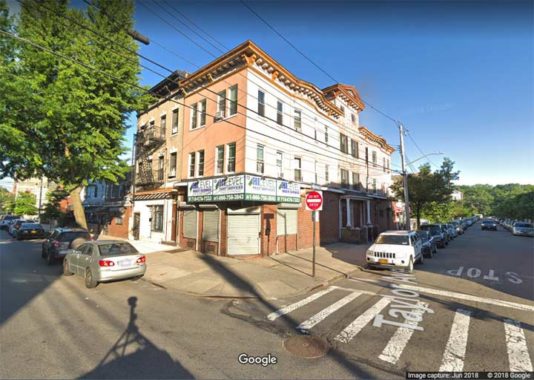
Zachary Taylor (1849-1850)
General Zachary Taylor, a reluctant politician, had to be persuaded by the Whig Party to run for president in 1848. He won on the back of his Mexican War exploits, defeating Democrat Lewis Cass. As President, Taylor struggled with teh disposition of territories acquired from Mexico as to whether they would be slave or free. “Old Rough and Ready” was the second president to die in office from what was believed was cholera. He was succeeded by his vice president Millard Fillmore.
In the Bronx, Taylor Avenue in Morris Park appears amidst other streets named for presidents and historic figures so it’s safe to say it honors the president. In Staten Island, New Brighton was laid out in the mid-1800s, and it’s possible its Taylor Street honors him as well. However, Williamsburg’s Taylor Street honors George Taylor, a Pennsylvania signer of the Declaration of Independence. And, there was a former sports bar in Kew Gardens Hills, Queens, Zacahry Taylor’s.

Millard Fillmore (1850-1853)
New Yorker Millard Fillmore, who bears a strong resemblance to present-day actor Alec Baldwin, was the second president who was not directly elected to the office, taking over for Zachary Taylor after the later’s death. He was pro-slavery and Nativist, in contrast to the abolitionist-sympathizing Taylor.
Brooklyn has two streets purportedly named for him, the Landmarked Districted Fillmore Place in Williamsburg and Fillmore Avenue, one of the few named streets in number and letter-dominated Marine Park. Fillmore Street in Morris Park, Bronx appears alongside streets named Garfield and Taylor.
There are no Fillmore Streets in Queens, but there is one of my favorite restaurants, Millard Fillmore’s near Queens College. Get the blackened meatloaf. Staten Island checks in with Fillmore Avenue in Willowbrook, Fillmore Place in Rosebank, and Fillmore Street in New Brighton.

Franklin Pierce (1853-1857)
Franklin Pierce, the 14th president, also resembled a show-biz figure, present day actor John Shea. During his term the USA and Mexico agreed on the Gadsden Purchase, which added territories that became New Mexico and Arizona; and Commodore Perry opened Japan to trade with the West.
Pierce was born in Concord, New Hampshire, which gave its name to the hilly section of Concord in Staten Island, which in the 1850s boasted residents William Emerson, brother of author Ralph Waldo, and Henry David Thoreau. It’s a good bet Concord’s Pierce Street is named for the president.
Not so the Bronx’s Pierce Avenue in Morris Park which is named for a long-ago property owner.

James Buchanan (1857-1861)
You may not think James Buchanan, who may historians believe to be the most ineffective president to date — he failed to stop the onset of the Civil War, which began at Fort Sumter, South Carolina in April 1861 — would be recognized on a NYC street sign. Yet, an East and West Buchanan Street can be found in New Brighton, Staten Island in a thicket of other presidential streets including Fillmore, Van Buren and other historical names such as Franklin, Lafayette and Clinton. Not only that, but Willowbrook’s Buchanan Avenue can be found adjacent to Roosevelt and Fillmore Avenues, so it counts as well.
The Bronx’s Buchanan Place, in Tremont, is named for a local family in the 19th Century.
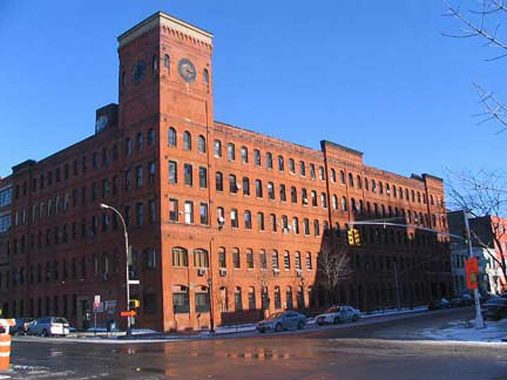
Abraham Lincoln (1861-1865)
New York City was a bastion of Confederate supporters, writes author John Strausbaugh in his book, “City of Sedition,” and was comprised of only the island of Manhattan during that era. Perhaps it is unsurprising, then, that only a few official locales in Manhattan were named for the Illinois Railsplitter, including Lincoln Center at Broadway and Columbus Circle, which was originally Lincoln Square; and the uptown Lincoln Houses, where Park Avenue meets FDR Drive. Abraham Lincoln kicked off his 1860 campaign for president in a speech at then-new Cooper Union, at Third Avenue and Astor Place, and local lore has it that afterward, he had a drink at nearby McSorley’s on East 7th Street.
In the Bronx, Lincoln Avenue runs for a few blocks in Mott Haven through what used to be a piano manufacturing district. The monumental, clock-towered Estey piano factory, which decades ago became residential housing, stands majestically at Lincoln Avenue and Bruckner Boulevard.
Brooklyn checks in with Lincoln Avenue in Cypress Hills, the lengthy Lincoln Place in Park Slope, Crown Heights and Ocean Hill; and Lincoln Road in Lefferts Gardens. In South Jamaica, Queens, Lincoln Street is a diagonal running through the prevailing numbered grid. And, in Staten Island, Lincoln Avenue is in Grant City, with Lincoln Place in Rosebank.
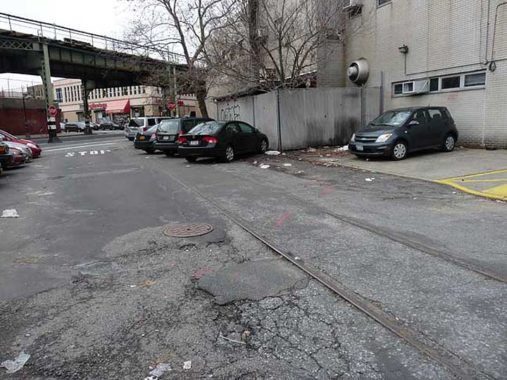
Andrew Johnson (1865-1869)
Andrew Johnson was in the right place at the right time in April 1865 when President Lincoln was assassinated at Ford’s Theatre in Washington, DC. Lincoln chose him as his running mate for reelection in 1864, switching from the sitting vice president, Hannibal Hamlin, making it the only split Republican-Democratic election ticket in USA history. However, Johnson squandered his place in history by illegally firing Secretary of War (today’s Defense) Edwin Stanton, leading to his impeachment, or Congressional trial to remove him from office. Johnson survived, but did not run for president in the 1868 election. During his tenure, the USA acquired Alaska from Russia.
It’s a safe bet that none of NYC’s Johnson routes are specifically named for Andrew Johnson, but they do include Riverdale’s Johnson Avenue, Bushwick’s Johnson Avenue, Downtown Brooklyn’s Johnson Street, Flatbush’s Johnson Place, Tottenville’s Johnson Avenue, Old Town’s Johnson Place, and Charleston’s Johnson Street.
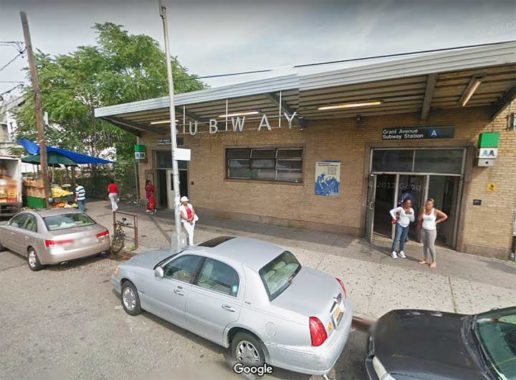
Ulysses S Grant (1869-1877)
While Abraham Lincoln was elected a second time, Ulysses S Grant was the first president to serve two full terms since Andrew Jackson, himself a wartime general who became president. He was the first of two presidents whose middle initial, S, was just an initial and didn’t stand for a name. Historians assert that Grant, who had alcoholic woes, was a less effective president that he was a military leader. While every president to date had been clean-shaven, Grant began a run of 7 straight presidents with facial hair of some kind; Lincoln was the first to wear a beard, while Samuel Tilden would have broken the streak had he prevailed against Hayes.
All streets named Grant in NYC are named for him. While Manhattan has no Grant Streets or Avenues, its perhaps best-known memorial, Grant’s Tomb, serves as his resting place along with his wife Julia. Harlem’s Grant Houses also bear his name.
The list includes Morrisania’s Grant Avenue; Cypress Hills’ Grant Avenue and Prospect Height’s Grant Square which features a magnificent equestrian statue of the president; Staten Island’s Grant City and its Grant Place, and Stapleton’s Grant Street.
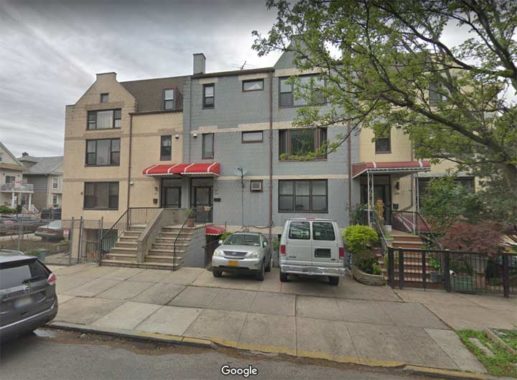
Rutherford B. Hayes (1877-1881)
In a situation that would become familiar in the 21st Century, Rutherford B. Hayes won the presidency despite dropping the popular vote tally. He earned more Electoral College votes than his Democratic Party opponent, New Yorker Samuel Tilden, who has an upper Manhattan statue and a Brooklyn avenue and public school named for him (and, my apartment house growing up was Tilden Court!)
There are no Hayes streets in the five boroughs, but Rutherford Place in Bensonhurst is a longshot as a namesake.
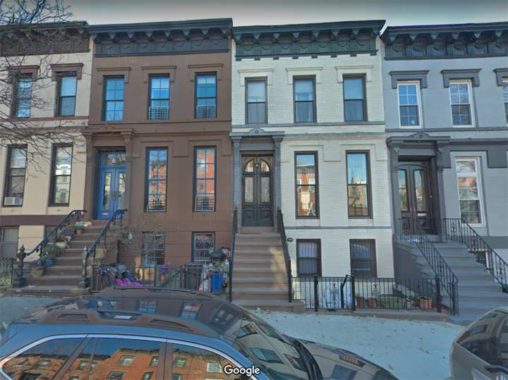
James Garfield (1881)
James Garfield served just over six months in the White House before his assassination by a disgruntled Republican office seeker. His cabinet included Robert Todd Lincoln, son of Abraham Lincoln, as Secretary of War.
Morris Park, Bronx’s Garfield Street is named for him, and in Brooklyn’s Park Slope, Macomb Street was renamed Garfield Place after his murder. There is also a Garfield Avenue in Rosebank, Staten Island.
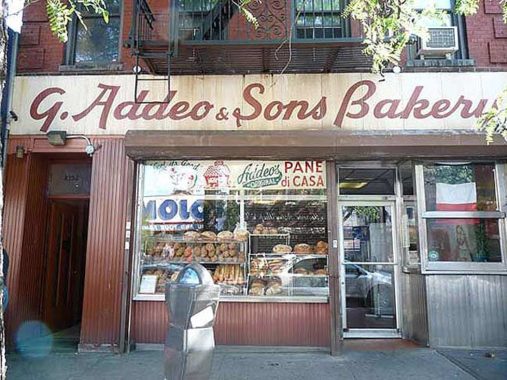
Chester A. Arthur (1881-1885)
G. Addeo & Sons Bakery is located on Arthur Avenue, in the heart of the Bronx’s Little Italy Belmont district. The avenue was named for the 21st President, Chester Alan Arthur, as Catherine Lorillard of the tobacco-producing family, who owned a large amount of property in Belmont, supported Arthur, and Mrs. Lorillard sponsored the statue of him that stands in Union Square.
With his muttonchop sideburns, President Arthur (1830-1886) looked the very model of a modern U.S. president in the Victorian age. Born in Vermont but a transplanted New Yorker, he was elected as James Garfield’s vice president and assumed office when Garfield was assassinated. As president from 1881 to 1885, he reformed civil service and introduced the merit system in federal employment. Despite Mark Twain’s support, he did not get the Republican nomination in the 1884 elections. It may have been just as well, because Arthur knew by then that he had a terminal kidney illness.
During the Civil War, Arthur purchased a townhouse at 123 Lexington Ave., between East 28th and 29th streets. After Garfield’s assassination on Sept. 19, 1881, Arthur took the oath of office there early in the morning of the following day, and again in Washington on Sept. 22. At the time, Arthur was mourning the recent death of his wife Ellen, a former opera singer; their son William had died in infancy. Garfield and Arthur had disagreed politically, and were only on the same ticket because Garfield wanted a New Yorker on the ballot to increase his chances for election.
Arthur passed away at his Lexington Avenue townhouse from a cerebral hemorrhage on Nov. 18, 1886. His significance in U.S. presidential history is mostly forgotten. There’s also Arthur Avenue in Arrochar, Staten Island, and tiny Arthur Court in West Brighton. The lengthy Arthur Kill Road comes from an English corruption of the Dutch achter kull, “back strait.”
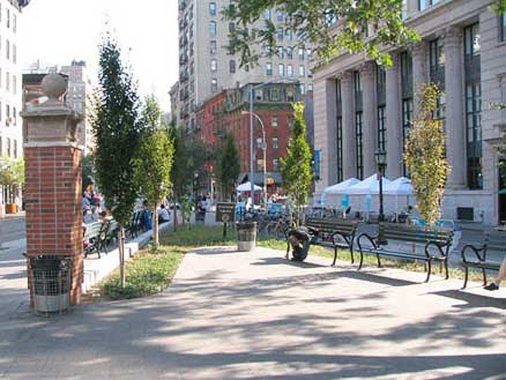
Grover Cleveland (1885-1889; 1893-1897)
Democrat Grover Cleveland (who moved to New York State from New Jersey as a young man and served as mayor of Buffalo and NYS governor) holds the distinction of being the only president to be defeated for a second term and run again in the next election and win the rematch, becoming the only president to serve two nonconsecutive terms. He lost to Benjamin Harrison (see above) in 1888 and then defeated Harrison in 1892. The Statue of Liberty was dedicated during his first term in 1886.
Cleveland Place in Little Italy, the northern two blocks of Centre Street, bears his name, as does Cleveland Street in Brooklyn’s East New York. There’s a Cleveland Place in Arrochar but, since it connects with Chicago Avenue, it’s likely named for the Lake Erie Ohio city. There’s also a Cleveland Street in New Brighton. Ridgewood, Queens boasts a Grover Cleveland High School.

William McKinley (1897-1901)
Republican William McKinley was the third of four presidents to be assassinated, and was the first to serve in the 20th Century (joining other millennial presidents, John Adams and Bill Clinton). He defeated William Jennings Bryan in both the 1896 and 1900 elections. He was killed by an anarchist at the Pan-American Exposition in Buffalo, NY, and was succeeded by his vice president, Theodore Roosevelt.
In Brooklyn, Bay Ridge’s McKinley Park was named for him shortly after his death, while Cypress Hills’ McKinley Avenue also bears his name. There’s a McKinley Avenue in Richmondtown, Staten Island. In the Bronx, Morrisania’s McKinley Square at Boston Road and East 169th Street was named for him in 1902.
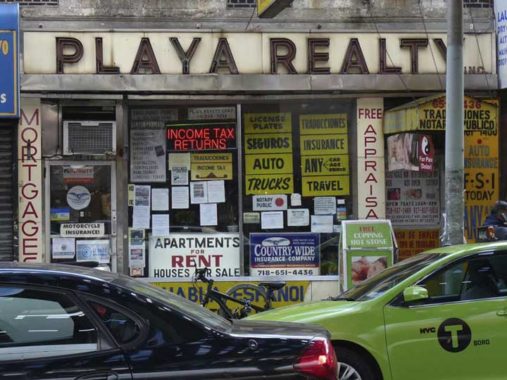
Theodore Roosevelt (1901-1909)
One of the more storied presidents in history, Theodore Roosevelt was a warrior, explorer, reformer, governor and president, ascending to the White House after William McKinley’s assassination and winning election outright in 1904. He ran again under his own Bull Moose Party banner in 1912, but split the vote with his Republican successor William H. Taft, allowing Democrat Woodrow Wilson the presidency. As he was giving a speech in 1912, he was shot in the chest by a would-be assassin. He finished the speech.
In Manhattan, his presence can be felt at the American Museum of Natural History with a heroic horseback statue as well as Roosevelt Park. In Queens, Roosevelt Avenue was built through Woodside and Jackson Heights and extended into Flushing as a right of way for the new Flushing Elevated from 1914-1917. In Staten Island, Roosevelt Avenue and Court in Willowbrook are named for him. I’m unsure about Roosevelt Street in Concord — Roosevelt is an old New York name, and Manhattan had a Roosevelt Street, since eliminated, decades before either Teddy or FDR. In Brooklyn, tiny Roosevelt Court can be found opposite Woodrow Court on 30th Street near 5th Avenue.

William Howard Taft (1909-1913)
William Howard Taft is the only president to serve as Chief Justice of the Supreme Court after his presidential term, as he did from 1921-1930. He was part of a remarkable Republican White House run that started with Abraham Lincoln and extended through Herbert Hoover, with Grover Cleveland and Woodrow Wilson the only Democrats elected president during that span. The Titanic sunk April 15, 1912, near the end of his presidency.
Staten Island checks in with a Taft Avenue in New Brighton and a Taft Court in Willowbrook.

Woodrow Wilson (1913-1921)
Despite the 1915 sinking of the Lusitania steamship liner and other German provocations, Woodrow Wilson campaigned for reelection in 1916 with the slogan “he kept us out of war.” By 1917, though, things were going so badly in Europe that America could be sidelined no longer and we went “over There.” Prohibition (of alcoholic beverages) was instituted under the Volstead Act in 1919.
The USA declared war on Germany April 6, 1917, after German submarines attacked several American merchant ships. Thus the USA entered the Great War, and this had an effect on the map of Brooklyn…
A few Brooklyn street names, it was decided, had to change if they named for German place names. Thus, Dresden Street in Arlington became Highland Place, Bremen Street in Bushwick became Stanwix, and Siegel Street, named for a German-born Union Civil War general, Franz Sigel, gained an extra “e”, perhaps to camouflage a German spelling. Most famously, though, Hamburg Avenue was renamed for the sitting president and became Wilson Avenue.
We’ve been at war with or in Germany again, Italy, Japan, Korea, Vietnam, Bosnia, Afghanistan and Iraq, twice, but presumably, no further street names have been changed in association with these conflicts.
In Soundview, Bronx, Wilson Square, Soundview and Patterson Avenues, was named for Woodrow Wilson, but in Eastchester, Wilson Avenue was named for NYC Mayor Ebenezer Wilson. Brooklyn’s Wilson Street in Williamsburg, meanwhile, was named for Pensylvania Declaration of Independence signer James Wilson, who was also an original Supreme Court justice.
In Brooklyn, tiny Roosevelt Court can be found opposite Woodrow Court on 30th Street near 5th Avenue.
In Staten Island it’s unlikely Wilson Avenue in Great Kills, Wilson Street in Old Town, or Wilson Terrace in Emerson Hill are named for Woodrow Wilson. I’m unsure if Woodrow Road in Greenridge and Rossville is named for Woodrow Wilson. Its former name is Journeay Avenue.
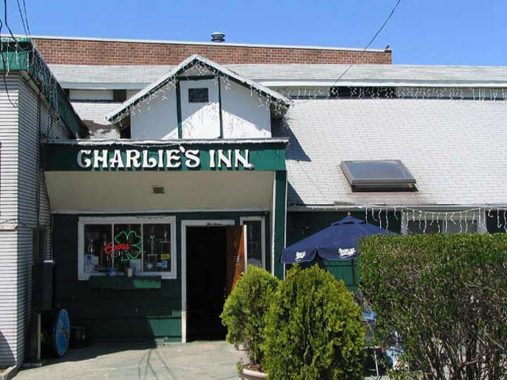
Warren G. Harding (1921-1923)
Warren Harding, elected to preside over a “return to normalcy” after World War I, had a tenure wrecked by various scandals including Teapot Dome, which was recent enough to be mentioned by my middle-aged grade school teachers. He died of cardiac arrest in August 1923 and was succeeded by his vice president Calvin Coolidge.
In the Bronx, Throg(g)s Neck’s Harding Avenue and Harding Park were not named for the president, but rather General Chester Harding, who won several battles in the Spanish-American War.
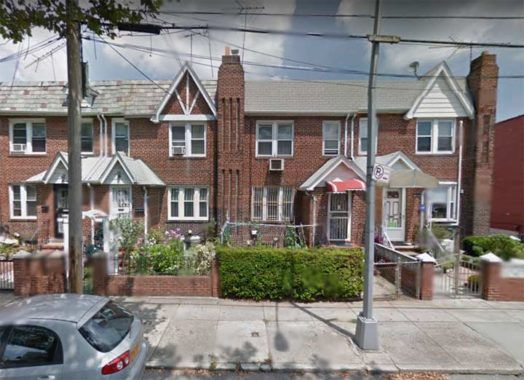
Calvin Coolidge (1923-1929)
At a party, a woman once said to Calvin Coolidge, “my husband bet me a dollar that I couldn’t get three words out of you.” Responded “Silent Cal,” “You lose.” Coolidge is regarded as a caretaker president during the generally decent economic period of the Roaring Twenties. He appointed J. Edgar Hoover the director of the Federal Bureau of Investigation, a post he held until his death in 1972.
In Briarwood, Queens, a pair of east-west avenues are named for Calvin Coolidge and his successor, Herbert Hoover.
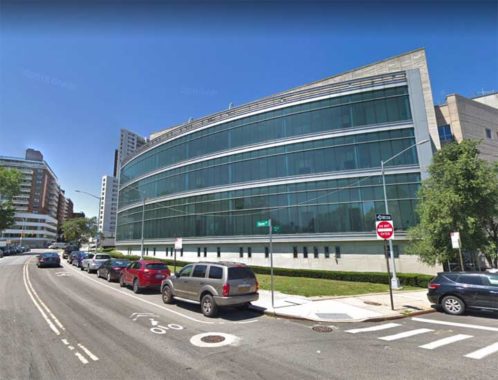
Herbert Hoover (1929-1933)
Iowan Herbert Hoover was elected in 1928, defeating New York City’s Al Smith, the first Roman Catholic to run for president. When I was a kid, my grandmother (who was in her 60s at the time) regaled me with Al Smith stories and how sorry she was he had been defeated. Could Al Smith have staved off the Great Depression? Herbert Hoover was unable to do so. He lived until age 90 in 1962, becoming the first in a remarkable number of 20th Century presidents to make it to that age.
Herbert Hoover is remembered by an east-west avenue in Briarwood, Queens.

Franklin D. Roosevelt (1933-1945)
FDR is considered a titan of the 20th Century, assuaging the Great Depression (1929-1941) and overseeing the USA’s entry into World War II after the Japanese surprise attack on Pearl Harbor in December 1941. He approved the D-Day invasion of German-controlled France in June 1942. By his death in 1945 WWII was all but won, but his conference at Yalta with Winston Churchill and Joseph Stalin had set the stage for a longer conflict, the Cold War with the USSR and other Communist countries that continued until the USSR’s collapse in 1990. Under Roosevelt, the USA became a true world power. He was the only president elected 4 times, as he continued to run for the presidency while the USA was embroiled in the war. No president since has run more than two times. He did it all from a wheelchair, as he was afflicted with polio as a youth.
New York’s East River Drive, running from Montgomery Street to the Triborough Bridge, was renamed Franklin D. Roosevelt Drive after his 1945 death. Brooklyn’s FDR High School in Borough Park and the FDR boardwalk in South Beach, Staten Island are also named for him.
In 1972, Welfare Island was renamed Roosevelt Island for FDR, and in 2014, Four Freedoms Park, named for a famed FDR speech, was opened at the island’s southern end.
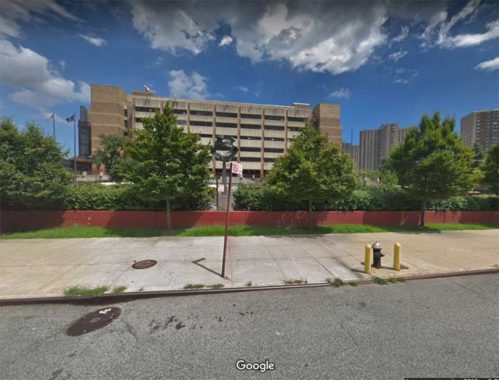
Harry S Truman (1945-1953)
Plain-spoken “Give ‘Em Hell, Harry” ascended to the presidency after the death of FDR, who he served as vice president. He gave the ultimate order to destroy the Japanese cities of Hiroshima and Nagasaki in August 1945 by atomic bomb, and Japan surrendered soon after, ending WWII. He helped rebuild European countries, allies and enemies alike, with the Marshall Plan. In 1948, it appeared he would lose his bid for election to New York Republican Tom Dewey, but a late surge after many national and local newspapers had been put to bed swept him back to the White House. Under Truman, the USA entered into another armed conflict in Korea in 1950. Like Ulysses S Grant, his middle initial was just that.
There are no streets or parks in NYC named for Harry Truman, but Co-Op City’s high school on Baychester Avenue, Bronx, is.

Dwight D. Eisenhower (1953-1961)
Dwight Eisenhower was another military commander who ascended to the White House, defeating Democrat Adlai Stevenson in 1952 and 1956. He served in both World Wars and was the supreme commander of United States forces in Europe in World War II.
During Ike’s presidency, the Federal Highway Act originated the USA’s Interstate highway system in 1956. In 1957 he sent troops to Little Rock, AR to enforce school desegregation. In 1958 he signed the National Aeronautics and Space Act that created NASA.
Public locations in New York City dedicated to Ike are sparse, but Eisenhower Mall in Battery Park was dedicated in 1963. For a few years, Eisenhower Mall was the temporary home of the Sphere sculpture, which survived the terrorist attack that destroyed the World Trade Center.

John F. Kennedy (1961-1963)
It’s hard to find streets named for relatively recent presidents, but you can find one in Oakland Gardens, Queens, where there is a traffic circle at 68th Avenue and 218th Street named for John F. Kennedy, the 35th president, who was elected in 1960 and assassinated by Lee Harvey Oswald in Dallas on Nov. 22, 1963. Of course, Idlewild Airport was renamed for JFK in 1964. A bronze bust of JFK can be found at Grand Army Plaza in Brooklyn.
John F. Kennedy did have a New York City address, and it was as far from this location as you can imagine. For a few years in the 1920s, JFK’s father, Joseph Kennedy, and his family lived in a 20-room, two-story stucco mansion at 5040 Independence Ave. at West 252nd Street in Riverdale, Bronx, near both Wave Hill and Riverdale Country School. But Joe Kennedy was unsatisfied with the house and moved to a larger one in Bronxville, New York, after two years.
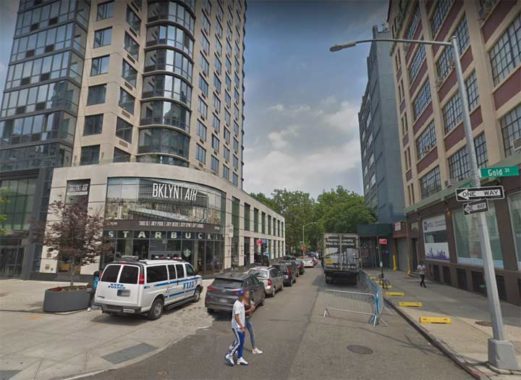
Lyndon B. Johnson (1963-1969)
Lyndon B. Johnson succeeded to the presidency after the death of John F. Kennedy. His tenure is considered mixed, as he began the War on Poverty and got the Civil Rights Act passed, yet got the USA deep into the morass of the Vietnam conflict. in 1964 he was overwhelmingly elected against Arizona senator Barry Goldwater. Sensing defeat, he declined to run for reelection in 1968, leaving the field open to Eugene McCarthy, Hubert Humphrey and Robert F. Kennedy, John’s brother and attorney-general. RFK was himself assassinated in June 1968; in 2012, the Triborough Bridge was named for him.
No thoroughfares in NYC are named for LBJ, but there are a number of routes called Johnson; see Andrew Johnson above.
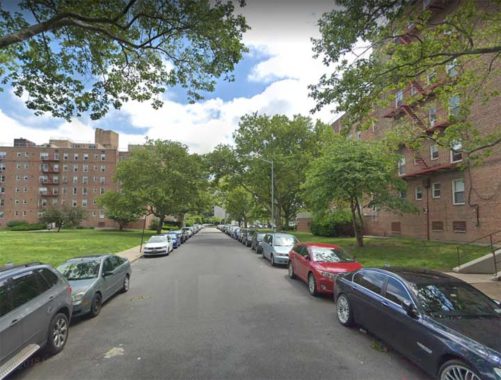
Richard M. Nixon (1969-1974)
After losing the presidential campaign to JFK in 1960, Richard Nixon, Dwight Eisenhower’s vice president, also lost the California governorship in 1962, prompting him to tell reporters “you won’t have Nixon to kick around any more.” Nixon made a stunning comeback in 1968, squeaking past Hubert Humphrey to win the White House. He was unable to fulfill his promise to end the Vietnam conflict “with honor” during his first term, but rode general economic prosperity to an overwhelming victory over South Dakota senator George McGovern in 1972. He traveled to China in 1972, meeting with Mao Zedong and opening the Far East Communist country to trade with the USA; today China is arguably the world’s #2 economic power.
Perhaps it was hubris, or a suspicious nature, but Nixon felt the need to damage Democratic chances in 1972 by approving the burglary of the Democratic National Committee offices at the Watergate office complex in Washington. When the truth came out, Nixon resigned in August 1974.
No streets in NYC are named for President Nixon, but there is a Nixon Court on Ocean Parkway just off the Belt Parkway and a Nixon Avenue in Ward’s Hill, Staten Island.
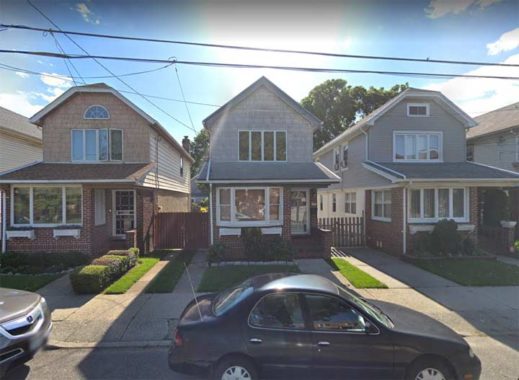
Gerald Ford (1974-1977)
Gerald Ford is the only president who was never elected president, nor succeeded to the presidency by way of elected office. Richard Nixon’s first vice president, Spiro Agnew, resigned in disgrace in October 1973, and Nixon chose the former US representative from Michigan to succeed him. When Nixon himself resigned in 1974, Ford succeeded him — having never been elected to either office.
The USA suffered an economic malaise during his term, and Ford was defeated in a close election by Georgia governor Jimmy Carter in 1976.
Brooklyn has two Ford Streets, one in Crown Heights, the other in Sheepshead Bay, named, like its brothers Batchelder, Briggs, Coyle, etc. for real estate speculators. In Fordham, the dead-end Ford Street was named for a landowning family. Staten Island features a Ford Place in West Brighton.
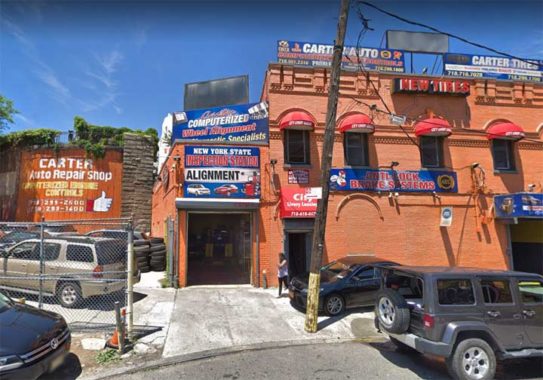
Jimmy Carter (1977-1981)
Jimmy Carter was the first president to affect a teeth-revealing smile in his official portrait. His term in office was punctuated by a continuing economic recession, and a hostage situation in Iran involving 53 Americans taken prisoner by the regime of the newly installed Ayatollah Khomeini, which Carter was unable to resolve either by diplomacy or by a military rescue mission. He was defeated by Ronald Reagan in the 1980 election. Arguably, his post-presidential career has been more successful, with diplomatic and charitable successes.
Only one street in NYC is named Carter: Carter Avenue in the Claremont Park-Mount Hope area. Jimmy Carter famously visited nearby Charlotte Street at the height of the “Bronx Is Burning” era in the 1970s, as did his successor, Ronald Reagan. Charlotte Street, now occupied by tidy tract housing, is now a far cry from its 1970s nadir.
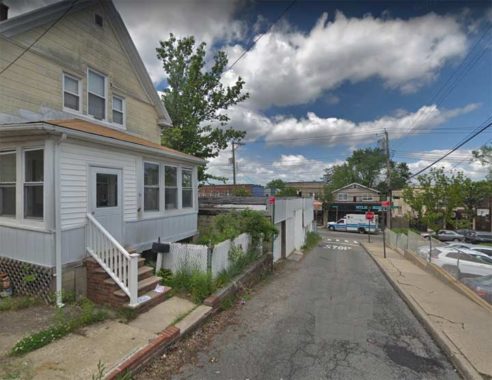
Ronald Reagan (1981-1989)
Ronald Reagan‘s presidency defined the ascendancy of celebrity in 1980s USA. After a three-decade career in Hollywood as an actor in feature films, “Dutch” was elected governor of California as an ultraconservative in 1966, and challenged Gerald Ford for the 1976 nomination, finally receiving the nomination in 1980, defeating Jimmy Carter, himself reduced by a bruising primary season in which he was opposed by Massachusetts senator Ted Kennedy, the brother of JFK.
Possibly Reagan’s legacy will be defined by detente with the Soviet Union, achieved by difficult negotiations with Soviet premier Mikhail Gorbachev. Under severe economic pressure, the Soviet Union collapsed in 1990 under Reagan’s successor, George H.W. Bush.
No New York City streets, buildings or parks are named “Reagan,” so the next best thing is Regan Avenue in Livingston, Staten Island.
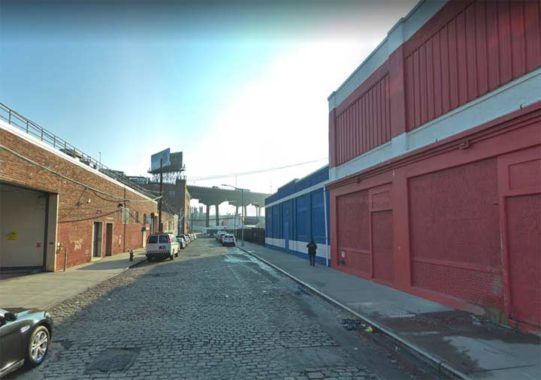
George H. W. Bush (1989-1993)
George Herbert Walker Bush was the second president to see his son, George W. Bush, also elected president. In 1988 the USA was on general “cruise control” with the economy generally good, and Ronald Reagan’s vice president was elected as basically a Reagan third term. GHWB earned accolades for the economic nature of the first Gulf War in which he ejected Iraq’s Saddam Hussein from Kuwait, and choosing to let things stand instead of invading Iraq outright. In 1991, the economy entered a recession, opening the door to a defeat by Arkansas governor Bill Clinton in the 1992 election.
There are number of short Bush Streets in New York City, including Tremont in the Bronx, Woodside, Queens (now 61st Street but remembered by Bush Park) and Red Hook, Brooklyn; and a short Bush Avenue in Arlington, Staten Island.
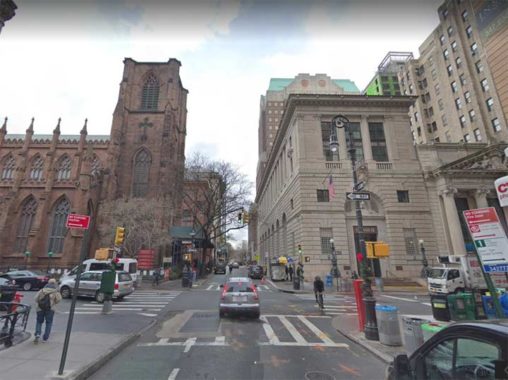
Bill Clinton (1993-2001)
Just as Ronald Reagan’s presidency dominated the 1980s, so did Bill Clinton‘s in the 1990s. His term was marked by general economic success and foreign entanglements were kept to a minimum excepting a conflict in Bosnia. One of two recent presidents elected while still in his 40s, Clinton supplied an overall vim to the presidency not seen since the JFK era. His second term was marked by an impeachment from a Republican-controlled Congress, as he was accused of lying about a dalliance with a White House intern, but he survived the trial.
There are numerous routes named Clinton in New York City, but none to date are named for Bill Clinton. Instead, they’re named for an early New York political giant, DeWitt Clinton, who held every important local office at one time or another including Senator, representative, NYC mayor and NYS governor.
There’s Clinton Street in Manhattan’s Lower East Side; Clinton Avenue and Clinton Place in Tremont, Bronx; Clinton Avenue in Maspeth and Clinton Terrace in Briarwood, Queens; Clinton Avenue in Clinton Hill and Clinton Street in Cobble Hill and Brooklyn Heights; and Clinton Avenue in New Brighton, Clinton Place in Port Richmond, Clinton Road in Great Kills and Clinton Street in Stapleton, making Clinton second only to Washington as far as NYC presidential names are concerned.
George W. Bush (2001-2009)
In another election contested in the Electoral College, GWB squeaked past Al Gore, but did not have much time to savor the victory as New York’s World Trade Center was destroyed on 9/11/01 when Islamic terrorists hijacked commercial flights and used them as rams, destroying the Twin Towers and damaging the Pentagon, killing and injuring thousands. Bush II invaded Afghanistan, thought to be a stronghold of the terrorist al-Qaeda faction, and in a puzzling move, Iraq, citing supposed “weapons of mass destruction” that Saddam Hussein had, little of which were ever found. In addition, when a hurricane hit New Orleans both the federal government and local officials botched in providing aid. At the end of his term Bush II faced a near-depression after a financial collapse, handing it off to his successor Barack Obama. In short, Bush II’s presidency was the least successful since James Buchanan’s and perhaps worse than that.
See above for NYC streets named Bush.
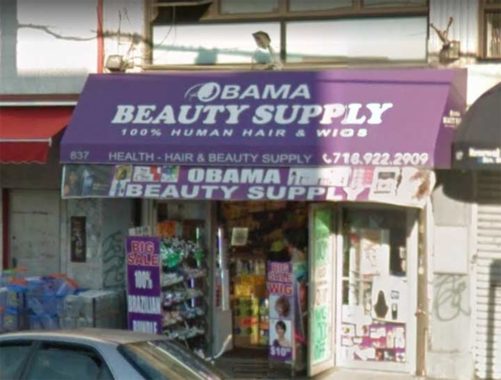
Barack Obama (2009-2017)
Illinois Democrat Barack Obama‘s election marked the first time a person of African American descent was elected president. Obama was tested quickly and had to resolve severe financial difficulties that included the failure of several financial firms that ld to a near depression. With the aid of a Democratic Congress, he pushed through the Affordable Care Act, enabling Americans to purchase health insurance at somewhat reasonable rates. Early in his presidency, Obama was awarded the Nobel Peace Prize, largely for not being George W. Bush. The author of the 9/11 attacks, Osama Bin Laden, was finally caught and killed in Pakistan during his first term.
An online petition sponsored by the progressive activist group MoveOn is hoping to get a stretch of Fifth Avenue between East 56th and 57th Streets named in honor of Barack Obama, 44th president of the United States. Not coincidentally — though the petition language doesn’t mention it — that stretch of Fifth Avenue is where Trump Tower, President Donald Trump’s private residence, is located.
Until that initiative succeeds, a number of businesses such as Obama Beauty Supplies, shown above, bear the name of the 44th president.
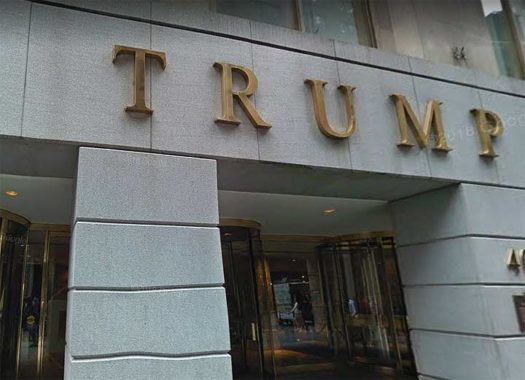
Donald Trump (2017-2021 )
In many ways Donald Trump’s presidency is also unique. He is the first president who did not serve as a vice president, governor, senator, representative or in the military to ever be elected president. Trump comes from the worlds of Manhattan real estate and television notoriety; he has been a well-known entity since the 1970s by the “chattering classes” and for years, presided over the TV game show The Apprentice, in which contestants vied for a job with his organization. At first, “regular” enterpreneurs were selected to play, later with B-list celebrities seeking a comeback.
Once again in an American election, Trump squeaked in by winning key contests in northern states that supplied him with enough Electoral College votes to beat former NYS Senator and secretary of State Hillary Clinton, wife of Bill, in 2016.
Donald Trump is so unpopular in NYC that it’s unlikely any streets will be named for him, but he’s an inveterate self-promoter and so his name appears on many of his properties around town.
Check out the ForgottenBook, take a look at the gift shop, and as always, “comment…as you see fit.”
2/24/19

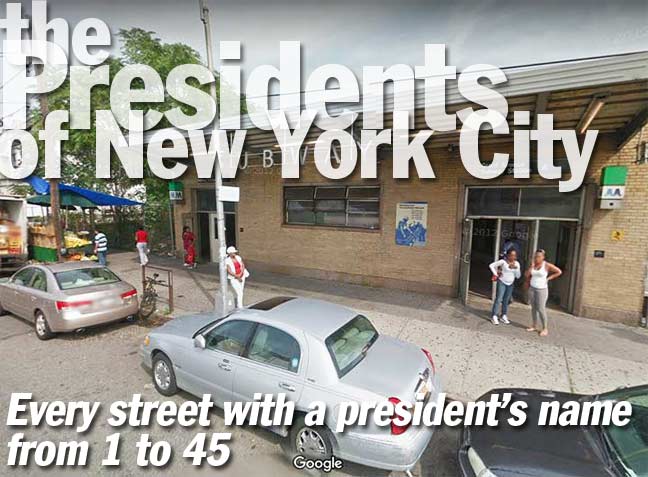
30 comments
You shouldhave taken a photo of the corner of Clinton and Bush Sts in Red Hook Brooklyn
One question no one’s been able to answer is who would be the current monarch of the United States if George Washington had decided to become king instead of president. Some genealogists say there could be up to 8,000 candidates, fewer than 150 of whom have the Washington surname. It’s such a complicated question because George Washington had no children. The royal line could have run through his older half-brother Augustine, his younger full brother Samuel, or his oldest stepson John Parke Custis. A further question is whether the monarchy would have been male-only, like most European monarchies, or could pass to women like in Britain.
There is a Nixon Ave. on Staten Island but it was there before the president. When New Brighton was mapped in the 1800s, there was a 1st, 2nd and 3rd streets. After consolidation, to avoid confusion, they were re-named Van Buren, Fillmore and Buchanan. See Beers Atlas of Richmond County 1874.
Would the apartment building Rutherford Place in Manhattan refer to Rutherford Hayes?
George McGovern was from, and senator for, South Dakota, not North Dakota. I know it’s easy to get them confused.
Thanks–I’m sure I made other errors, as politics are a bit outside my lane
In regards to Julia Gardiner Tyler, she was born on Gardiner’s Island, out past the Hampstons and also lived in Bay Shore in Sagtikos Manor, owned by the Gardiner family and now opened as a museum. They have a website, if interested.
Regarding your last statement: in keeping with the rest of the places listed, it doesn’t matter if it’s named in his honor. His family name is already out there thanks to his father. Places like Trump Village carry his father’s name and predate his presidency so like him or hate him, he’s represented in New York beyond his brand.
The Kennedy Building in Forest Hills, Queens (located across Queens Blvd. from Our Lady Queen of Martyrs Church) was named after JFK. There used to be a bust of Kennedy in the lobby but I’m not sure if it’s still there since they’re working on the building. At the time (maybe still is) the building was the tallest in Forest Hills.
Brooklyn almost had a McKinley Road for Avenue M, and a Roosevelt Road in lieu of Avenue R. William Henry Harrison would have been referenced by Tippecanoe Road in place of Avenue T. There was a 1910 proposal by one Walter B. Brown, secretary of the Manhattan Terrace Field Club, to rename all of the lettered avenues from H to Z. (Brooklyn Eagle, 2/16/1910) Brought before a meeting of Field Club members with members of the Flatbush Board of Trade, the proposal was defeated because many of the names were “too English”, and the idea appears never to have been brought to the City Council.
For those interested, the names proposed were: Hiawatha Rd., Ivanhoe Rd., Jarvis or Jardyst Rd., Kenwood Rd., Lancaster or Leicester Rd., McKinley Rd., Nottingham Rd., Oglethorpe Rd., Peary Rd., Quentin Rd., Roosevelt Rd., Stanwood or Springfield Rd., Tippecanoe Rd., Underwood Rd., Victoria Rd., Wilhelmina Rd., Xerxes Rd., Yarmouth Rd., Zundel Rd. (Note: In 1910, both Teddy and Quentin Roosevelt were very much alive. Although all the names proposed were rejected in 1910, by 1922 Quentin Road had been officially renamed)
I’m interested. Can you point me to documentation?
I have a PDF of the article. I’ll email it to you. (I couldn’t find an ordinance on the official renaming of Quentin Rd.; it just seems to appear in 1922 ads and articles.)
kevinjudewalsh@gmail.com thanks
Hi. The link below details a lot of the info you provide and has a link to the original article you referenced (it has several great links that this site’s readers will probably enjoy). In addition, it gives the reason for the renaming of Quentin Road, which I had always thought was in memory of Theodore Roosevelt’s son.
https://gravesendgazette.com/2016/01/24/the-curious-case-of-quentin-road/
A real fun article that I greatly enjoyed. A few comments.
1. The two Jefferson thoroughfares in Brooklyn were not correctly configured in the article. Jefferson Street begins at Broadway and does not extend into Bed-Stuy; it does, however, extend into Queens for some blocks. Jefferson Ave. ends at the Queens border at Wyckoff, so does not extend into that borough. Incidentally, Jefferson St. was named by the town of Bushwick and Jefferson Ave. received its designation from the City of Brooklyn. This all occurred before Bushwick was annexed into Brooklyn in 1855. Initially, Jefferson Avenue ended at Broadway, which was the Bushwick/Brooklyn border. However, sometime in the early 1900’s Jefferson Ave. was extended to include the street that continued from Broadway to the Queens line. The extension of Jefferson Ave. has been the source of much confusion since that time. (I do not remember the name of the street name that was eliminated but it can be found in Armbruster’s book.
Regarding William Henry Harrison, Armbruster references two streets in East Williamsburg that may refer to him. The streets are (1) Thames Street, which is the name of a battle that he won in the War of 1812; and (2) Harrison Place, which, according to the old historian, was in fact named after our ninth President.
And, finally, a reference to Grover Cleveland HS in Ridgewood, where my sister attended, should also be cited. (I also think that Taft HS in the Bronx was named for our “biggest” President.)
Thanks again for this terrific piece.
I reworked it. Two Jefferson routes in the same neighborhood is a bit confusing. One block of Jefferson Ave., between Wyckoff and Cypress, is in Queens.
He also has the Trump golf course in the Bronx as well as a the Trump Pavillion hospital wing in Jamaica not to mention the Trump skating rink in Central Park, if that’s still around. I’m one of those people that rooted for him the first time and will vote for him again. He’s done a heck of a lot more good than bad.
Fear of defeat was not the only reason why Lyndon Johnson declined to run for re-election in 1968, Some years earlier he had commissioned an actuarial study in an attempt to determine how long he was likely to live. According to the actuaries, based on the lifespans of males on both sides of his family it was unlikely that Johnson would live to age 65. Johnson would be 64 at the end of his term if he ran and won in 1968, and he did not relish the prospect of a retirement lasting under a year.
As things turned out, if Johnson had ran and won in 1968 his retirement would have lasted less than 24 hours, as he died the day after what would have been his successor’s inauguration. He might, however, had resigned during this term as his health steadily deteriorated.
Regarding the two living grandsons of John Tyler. In 2010 I attended a symposium at the Civil War Museum in Richmond, the subject of which was 4 pre civil war presidents and how what they did or didn’t do in office might have brought on the conflict. The last speaker discussed John Tyler, but before he began, he mentioned that his grandson Harrison Tyler was in the audience and had him stand and be recognized. I sat there for the remainder of the program thinking I missed a couple of ‘greats’ in there, but upon returning to my hotel and checking it out I was amazed that it was in fact true. To think of so many people who have multiple great grandparents from the Civil War era and Harrison’s grandfather was born 75 years prior to that when Washington was president is astounding. So both our 10th and 43rd presidents have living grandchildren.
Harrison still lives on the same property as John, called Sherwood Forest, outside Richmond. My wife and were given a tour of the place by the head landscaper (after calling a number on the front gate), who allowed her to sit on the 150 year old furniture, as the woman of the house wasn’t around. As it is still lived in, it was interesting to see modern technology and that old furniture both in the same room. A year or two later they were interviewed by Mo Rocca for CBS Sunday Morning, who amusingly asked if they were related to Aerosmith’s Steven Tyler. He also asked if they wanted to continue the tradition of fathering kids late in life. Harrison was all for it. She was not amused. This post is the first I’ve learned that the other living grandson has also had kids in his 70’s.
It should say that Benjamin Harrison was William Henry Harrison’s grandson, not that William Henry Harrison’s grandson was William Henry Harrison. Genealogy is hard! 😉
Got it.
One nit to pick; It’s misleading to call William McKinley’s assassin, Leon Czolgosz, “Polish anarchist,” as he was a born-and-bred midwesterner, born in Michigan to Polish immigrant parents. There were attempts to conflate his crime with some sort of foreign “otherness,” but Czolgosz was as American as you or me.
I removed “Polish.”
“Warren Harding, elected to preside over a “return to normalcy” after World War II, had a tenure wrecked by various scandals”
I think that you meant World War I
fixed
Kevin maybe you can correct this if I’m wrong: wasn’t Quincy Street actually named after Josiah Quincy III, a distant cousin of John Quincy Adams and the 2nd Mayor of Boston and namesake for its 200 year old public market building? It’s still a family connection as Adams was a member of the Quincy family by way of his mother Abigail, but Josiah is no slouch and had notoriety during the time when the street would have been laid out even if his fame has faded over the years…
I don’t have any research indicating that. Do you have a source?
Brooklyn by Name: How the Neighborhoods, Streets, Parks, Bridges and More Got Their Names, authored by Leonard Bernardo and Jennifer Weiss on page 94
Looking at some old maps of Brooklyn, I found a possible Andrew Jackson reference. Maybe a long shot, maybe not.
The original name for Lexington Avenue in Bed Stuy was Hickory Street. I had never given any thought to this other than that it was referring to hickory trees until I looked at the surrounding blocks. Interspersed between the “Generals” (Greene, Gates, etc.) are some presidents. From south to north are: Jefferson St., Madison St., Monroe St., Quincy St. (J. Q. Adams) and Van Buren St. These streets are also in the chronological order of each president’s administration. Hickory Street would have fit right in chronologically between Quincy and Van Buren, just as Andrew Jackson served between John Q. Adams and Martin Van Buren.
Until now, I never knew that Battery Park had a mall considering its size. Usually, when I think of NYC parks that have a mall, they are the larger ones such as Central, Prospect,and Pelham Bay. Then again, you learn new things everyday. My guess is that Battery Park is most likely the smallest park to have a mall for NYC.